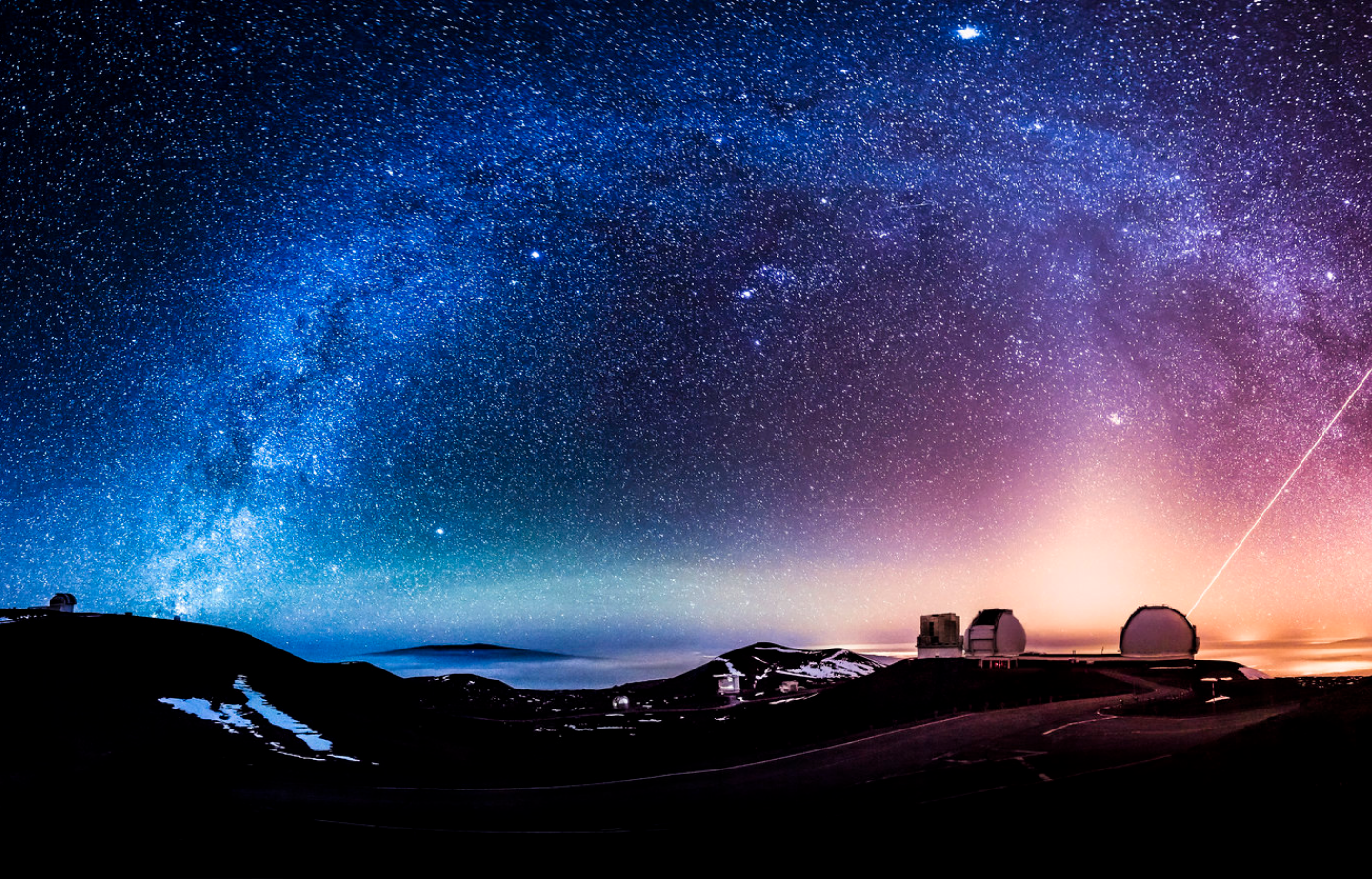Welcome
The unique beauty and heritage of majestic Maunakea draws an increasing number of visitors from around the world. We strive to be good stewards by helping strike a balance between visitor traffic and preserving this special place.
Please consider taking this virtual 360 tour of our telescope facility in lieu of a summit visit. Limiting traffic helps to maintain the delicate ecological and cultural well-being of the mountain.

Visitor’s Gallery, Maunakea
Step inside our telescope facility and check out one of our twin telescopes, Keck I, in the viewing area marked by a blue door. You may also peruse through gallery exhibits to learn about Keck Observatory’s research and operations. Two public restrooms are available in the visitor’s gallery for your use.
Hours of Operation:
Monday-Friday, 10 a.m. – 4 p.m.
Protect Hawaiʻi’s Precious Dark Skies
Dark night skies are valued by professional and amateur astronomers, not to mention lovers of starry skies in general. Recent changes in lighting, including widespread use of Light Emitting Diodes (LEDs), threaten dark night skies over Maunakea and Haleakalā. The University of Hawaiʻi Institute for Astronomy is making an effort to protect Hawaiʻi’s dark night skies from light pollution.

Planning Your Visit
Important Health and Safety Information
Please exercise caution when driving to the nearly 14,000 foot summit of Maunakea and adhere to the following health and safety guidance:
- Check the weather and road conditions prior to your visit by calling: (808) 935-6268
- Make sure your vehicle is clean to prevent the spread of invasive species on Maunakea’s precious environment.
- Acclimate for 30 minutes at the Maunakea Visitor Information Station (VIS) located at the 9,200-foot level before continuing up to the summit.
- A 4-wheel drive vehicle is required above the 9,200-foot level as the road to the summit is unpaved, rough, and steep; use 4WD Low Range.
- Bring warm clothing; temperatures atop Maunakea can drop to 20 degrees Fahrenheit and winds can reach 150 mph.
- Wear sturdy footgear that can withstand the elements should your vehicle break down.
- Due to high altitude hazards, it is not recommended to drive above the VIS if you are pregnant, under age 13 or have a heart or respiratory problem.
- Do not ride your brakes on the drive down to avoid brake failure and overheating.
- Note that medical and auto help is a minimum of two hours away
For detailed health and safety guidance, please visit these useful links:

Send a Donation
Thank you for your generous support of W. M. Keck Observatory and for becoming a valued champion of our mission to advance the frontiers of astronomy and share our discoveries to inspire the imagination of all.
Donations are tax-deductible to the extent permitted by law. Keck Observatory is registered as a 501(c)(3) non-profit organization.
Stay Updated
Be a part of our mission and unlock the frontier of astronomy. Subscribe to the Keck Nation Newsletter and receive exclusive access to our latest discoveries, upcoming events, and behind-the-scenes content. Or, find one of our past emails. Together, we reach for the stars!



